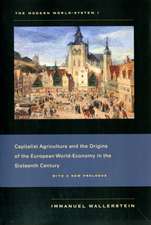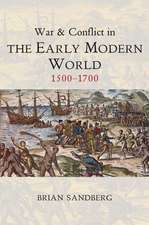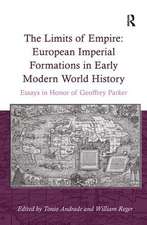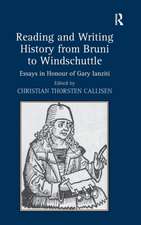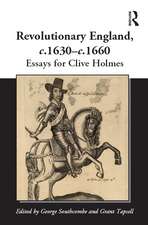A Cultural History of Early Modern English Cryptography Manuals
Autor Katherine Ellisonen Limba Engleză Hardback – 20 iun 2016
These manuals established cryptography as a primer for intelligence, a craft able to identify and test particular mental abilities deemed "smart" and useful for England’s financial future. Through close readings of five specific primary texts that have been ignored not only in cryptography scholarship but also in early modern literary, scientific, and historical studies, this book allows us to see one origin of disciplinary division in the popular imagination and in the university, when particular broad fields—the sciences, the mechanical arts, and the liberal arts—came to be viewed as more or less profitable.
| Toate formatele și edițiile | Preț | Express |
|---|---|---|
| Paperback (1) | 416.22 lei 6-8 săpt. | |
| Taylor & Francis – 17 ian 2019 | 416.22 lei 6-8 săpt. | |
| Hardback (1) | 1109.99 lei 6-8 săpt. | |
| Taylor & Francis – 20 iun 2016 | 1109.99 lei 6-8 săpt. |
Preț: 1109.99 lei
Preț vechi: 1353.64 lei
-18% Nou
Puncte Express: 1665
Preț estimativ în valută:
212.40€ • 227.13$ • 177.09£
212.40€ • 227.13$ • 177.09£
Carte tipărită la comandă
Livrare economică 17 aprilie-01 mai
Preluare comenzi: 021 569.72.76
Specificații
ISBN-13: 9781472457646
ISBN-10: 1472457641
Pagini: 232
Ilustrații: 34
Dimensiuni: 156 x 234 x 18 mm
Greutate: 0.48 kg
Ediția:1
Editura: Taylor & Francis
Colecția Routledge
Locul publicării:Oxford, United Kingdom
ISBN-10: 1472457641
Pagini: 232
Ilustrații: 34
Dimensiuni: 156 x 234 x 18 mm
Greutate: 0.48 kg
Ediția:1
Editura: Taylor & Francis
Colecția Routledge
Locul publicării:Oxford, United Kingdom
Notă biografică
Katherine Ellison is Professor of English at Illinois State University, where she directs the Cipher Series Faculty Lectures in Intelligence and Cryptography and teaches courses in literature and culture of the seventeenth and eighteenth centuries. Her first book, Fatal News: Reading and Information Overload in Early Eighteenth-Century Literature, was published in 2006.
Descriere
While there are many surveys of cryptography, none pay any attention to the volume of manuals that appeared during the seventeenth century, or provide any cultural context for the appearance, design, or significance of the genre during the period.Through close readings of five specific primary texts that have been ignored not only in cryptography scholarship but also in early modern literary, scientific, and historical studies, this book allows us to see one origin of disciplinary division in the popular imagination and in the university, when particular broad fields – the sciences, the mechanical arts, and the liberal arts – came to be viewed as more or less profitable.
Cuprins
Introduction: Crises of expression in seventeenth-century cryptography manuals 1. The structures of seventeenth-century cryptography manuals 2. Textual precedents and seventeenth-century cryptography manuals 3. Occult communication, the new sciences, and cryptography 4. Cryptography and universal language schemes 5. Trade security and intelligence as capital 6. Materializing intelligence 7. Typography and multimodality in cryptography manuals 8. Conclusion: Logistikon: the fate of cryptography








